Whether it’s an oil boom or an influx of tech jobs, the populations of these 10 cities grew faster than in any other major metro area between July 2012 and July 2013, according to data from the Census Bureau.
Austin
- Population: 1.9 million
- % gain : 2.6%
- New residents: 47,941
A thriving university town with one of the best live music scenes in the country, Austin’s youthful, creative vibe keeps people coming.
With it’s more than 250 live music venues and festivals like its famed South by Southwest (or SXSW) Austin’s “cultural vibrancy helps to drive the economy in a big way,” said demographer Ryan Robinson.
Another driver: Jobs.
Austin’s massive University of Texas, with its 50,000-plus enrollment, is known for its engineering and computer science programs, which have spawned many local tech businesses and incubators. It has also attracted a number of big tech companies —
Apple, Facebook, Google and Intel
In January, the city’s unemployment rate fell to 4.7%, the lowest of any metro area with a population of one million or more.
Houston
- Population: 6.3 million
- % gain : 2.2%
- New residents: 137,782
Oil and gas have long kept Houston humming. But these days — with oil prices hovering around $100 a barrel — the city is booming.
“The recent oil surge going on in Texas is generating major job gains,” said Ray Perryman, a regional economist and founder of The Perryman Group.
But it’s not just the energy sector that’s hiring. A major port city, Houston is also home to several manufacturing, transportation, aerospace and medical research companies as well.
Newcomers will find homes affordable, too: The median home price in Houston is about $195,000, about $10,000 less than the national median.
Raleigh, N.C.
- Population: 1.2 million
- % gain : 2.2%
- New residents: 26,012
Along with the cities of Durham and Chapel Hill, Raleigh forms North Carolina’s Research Triangle, an area rich with tech companies and universities including Duke, University of North Carolina at Chapel Hill, and North Carolina State.
The universities are not only among the area’s largest employers, but they also “add to the local quality of life by providing access to excellent healthcare, arts and sports,” said Harvey Schmitt, CEO of the Greater Raleigh Chamber of Commerce.
And in recent years, hiring has really picked up. In January, the unemployment rate was 5.5%, down nearly two percentage points from a year earlier.
Companies have plenty to entice new recruits with: Housing is affordable, only about 10% higher than the national norm, while incomes are nearly 20% higher.
Orlando, Fla.
- Population: 2.3 million
- % gain : 2%
- New residents: 44,390
Mickey Mouse is making a comeback.
Orlando attracted 57 million visitors last year, up from 43 million in 2009.
Yet while nearly one-third of the area’s jobs are tied to the tourism industry, other industries are expanding here too, namely tech.
The city is a leader in the growing field of modeling and simulation. It’s also a major industrial site with Lockheed Martin, General Dynamics, and Siemens, all running production lines there.
And with median home prices of around $155,000, nearly every working family can afford to buy a home.
San Antonio
- Population: 2.3 million
- % gain : 1.9%
- New residents: 43,056
San Antonio’s economy is still riding high thanks, in part, to the oil boom. Valero Energy , one of the nation’s largest oil companies, is based here, as are a handful of other oil and energy services firms like Tesoro Corp . and NuStar Energy
The local economy, though, is still well diversified, with healthcare, tourism, financial services and call centers major sources of jobs. And Joint Base San Antonio, one of the largest military installations in the country, hosts 80,000 residents and trains some 130,000 military personnel a year.
In January, the metro area unemployment rate was 5.4%, more than a percentage point below the national average.
San Antonio is also a young city, which is also helping to boost the local population, said Lloyd Potter of the Institute for Demographic and Socioeconomic Research University of Texas at San Antonio. “We have fewer deaths because we’re young and more births as well,” he said.
Denver
- Population: 2.7 million
- % gain : 1.9%
- New residents: 50,782
Great skiing, biking and hiking are just some of the reasons people flock to the Mile-High City.
“People see Colorado as a place for opportunity,” said state demographer Elizabeth Garner. And when they arrive, it’s not too hard to find one.
Area employment grew nearly 3% in 2013 thanks to hiring in sectors such as mining and energy, construction, professional and business services, and education and healthcare services, according to Denver’s Metro Area Economic Development Corporation. Some of the area’s biggest employers include Halliburton , Comcast and CenturyLink.
And while unemployment is still just a few ticks lower than the national average, it’s improving fast. In January, the unemployment rate fell to 6.4% from 7.8% the year before.
Home prices, at a median of $259,000, aren’t exactly cheap, but they are affordable relative to median family income of nearly $78,000.
Nashville, Tenn.
- Population: 1.8 million
- % gain : 1.8%
- New residents: 31,153
A thriving music industry, a host of big healthcare employers and a burgeoning start-up scene have made Nashville a hotspot for several years.
The city’s famed Music Row, with its record companies, music publishers, clubs and guitar shops, is where some of the city’s 20,000 music industry jobs can be found.
Yet, many more of the area’s residents work in the much less-glitzy field of healthcare.
“About half of all the for-profit hospital beds in the country are administered from Nashville,” said Matthew Wiltshire, head of Nashville’s department of economic and community development. “Healthcare is a $30 billion industry here.”
Another big attraction: the reasonable cost of living, which is 14% less than the national average, according to Wiltshire.
Charlotte, N.C.
- Population: 2.3 million
- % gain : 1.8%
- New residents: 40,368
The second biggest banking center in the country behind New York, Charlotte is home to Bank of America , and hosts offices for Citi , Ally Financial , JPMorgan Chase and Wells Fargo.
And new jobs are being created, many through spin-offs of these financial behemoths, said John Connaughton, Babson Capital Professor of Economics at University of North Carolina Charlotte.
He said many former employees of the big banks have founded financial consulting firms and other small financial services businesses.
But don’t think that the area is solely about suits and money. NASCAR has multiple offices in the area as well.
Oklahoma City
- Population: 1.3 million
- % gain : 1.7%
- New residents: 22,280
Like many cities in Texas and North Dakota, Oklahoma City is also in the midst of an oil boom.
The expansion of horizontal drilling and fracking has made it possible to tap into vast reserves that remained untouched before — meaning lots of oil money and lots of jobs.
“As the amount of drilling goes up, demand for services, like finishing off well heads, laying pipeline and cleaning up site, increases as well,” said Don Hackler, public information officer with the state’s Commerce Department.
As a result, people are flocking to the area to find work: The greater Oklahoma City has seen its population grow by more than 5% since the 2010 Census.
And so far, there appears to be almost enough jobs for everyone. In January, the metro area unemployment rate was just 5%, a full two percentage points below the national rate.
Phoenix
- Population: 4.4 million
- % gain : 1.6%
- New residents: 71,130
Phoenix is starting to rise from the ashes of the housing bust.
After being one of the hardest hit cities during the foreclosure crisis, home prices have come roaring back. Construction workers idled during the housing bust are back at work rehabbing foreclosed homes and other distressed properties so they can be put back on the market or rented out.
Other jobs are coming back, too, in industries like renewable energy, aerospace, bio-med and business services, according to the Greater Phoenix Economic Council. And recently Apple announced it would build a plant in nearby Mesa that would employ more than 2,000 workers.Still, unemployment remains relatively high. In January, the unemployment rate was 6.7% — about on par with the national level — and about 0.8 percentage points lower than last year.
Articulo de: CNN Money


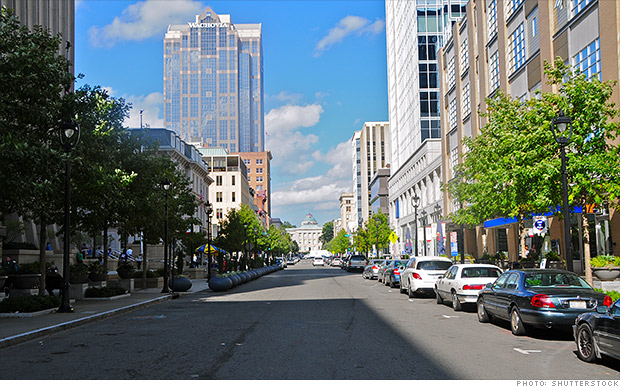
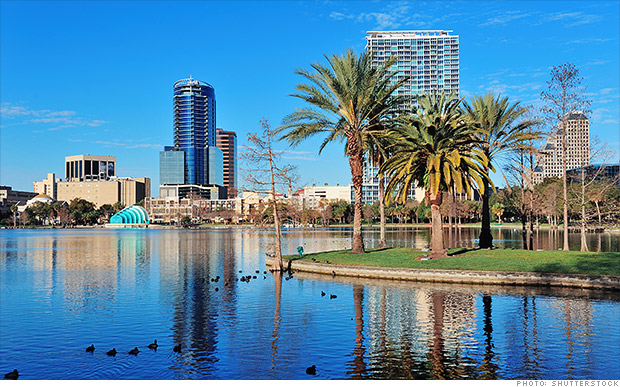

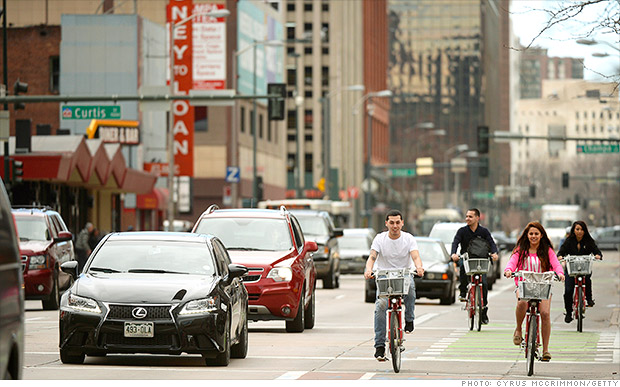
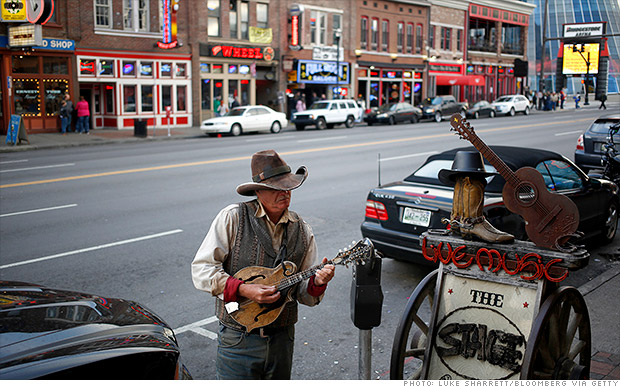

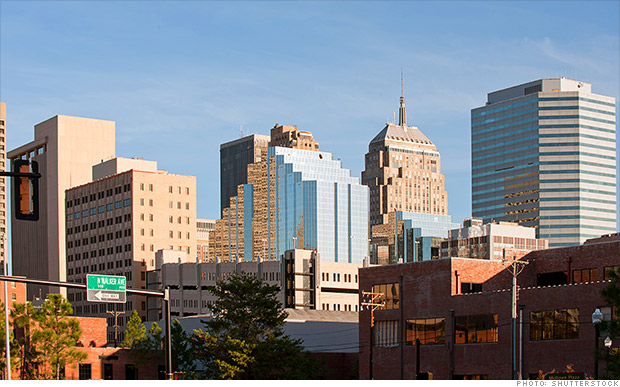
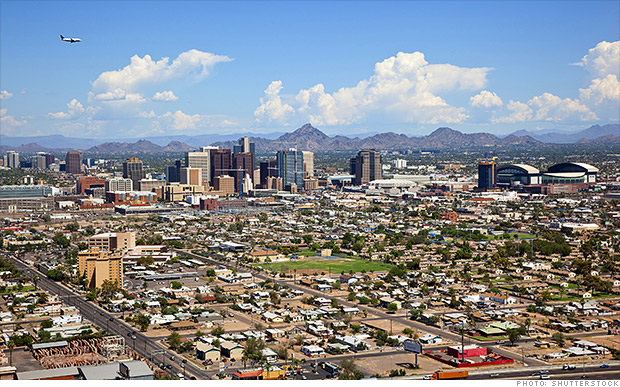
2 Comentarios